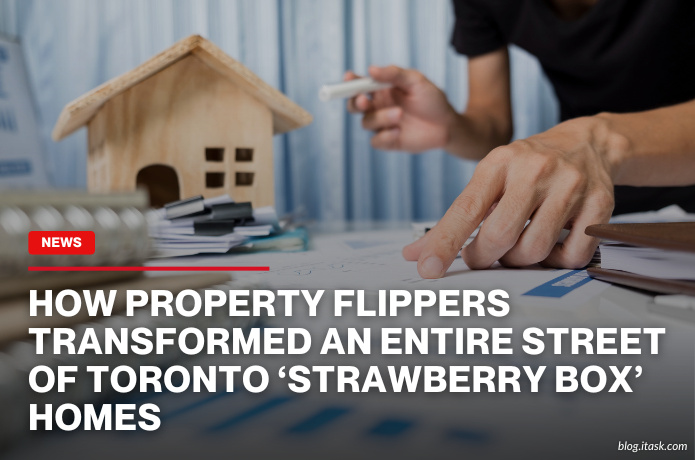How property flippers transformed an entire street of Toronto ‘strawberry box’ homes
How property flippers transformed an entire street of Toronto ‘strawberry box’ homes

In Toronto’s Long Branch neighborhood, a quiet street lined with old “strawberry box” homes has undergone a striking transformation, thanks to property flippers. Known for its compact, square bungalows built after WWII, Exmoor Drive was once an affordable area for middle-income buyers. These small homes, often seen as relics of a bygone era, have recently been replaced by larger, more modern builds that appeal to high-income buyers.
The shift began as flippers purchased and redeveloped properties, updating or entirely rebuilding the homes. In some cases, they divided lots to create more homes in the area, resulting in significant changes to the neighborhood’s appearance and property values. Where there were once nine modest homes, there are now 12 upscale properties, each selling for considerably higher prices. This has caused a steep increase in property values, with some new builds nearly doubling the price of original houses on the street.
The transformation has made Exmoor Drive an example of Toronto’s broader housing trend, where older, affordable homes are replaced by more expensive modern constructions. As Toronto’s housing demand grows, this type of redevelopment is increasingly common, altering both neighborhood character and affordability.
While the new developments have increased property values, they’ve also pushed middle-income buyers out of reach of these homes. Community members and local organizations have voiced concerns about preserving the character of neighborhoods like Long Branch, yet the pressure for high-end housing and development remains strong.
This transformation shows both the economic impact and the cultural changes that property flipping can bring to a community. What was once a street of cozy, accessible homes has become a row of modern, towering houses, highlighting the broader struggle between development and affordability across Toronto.
